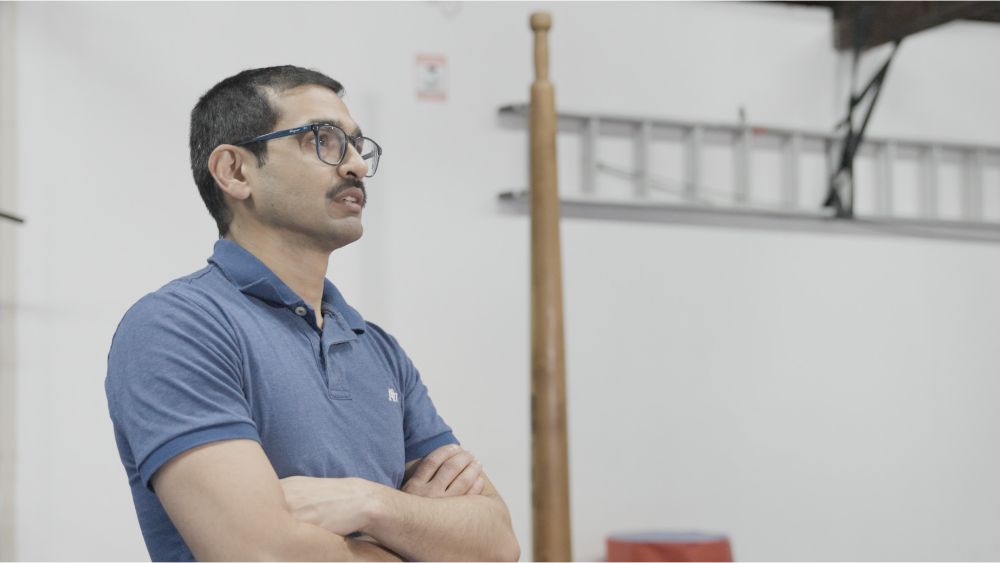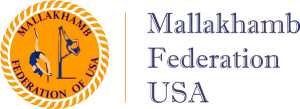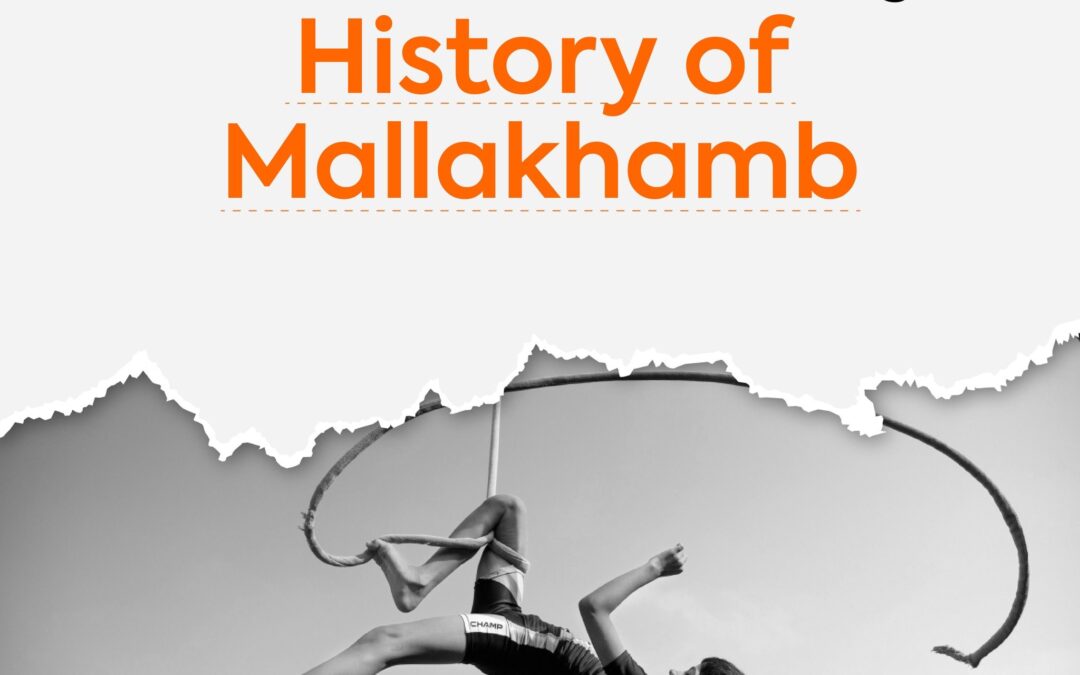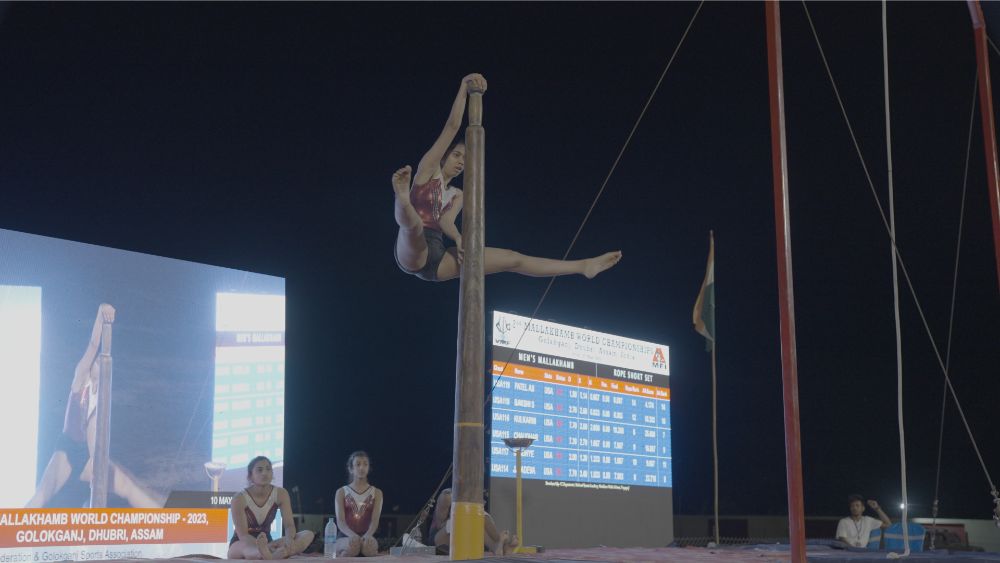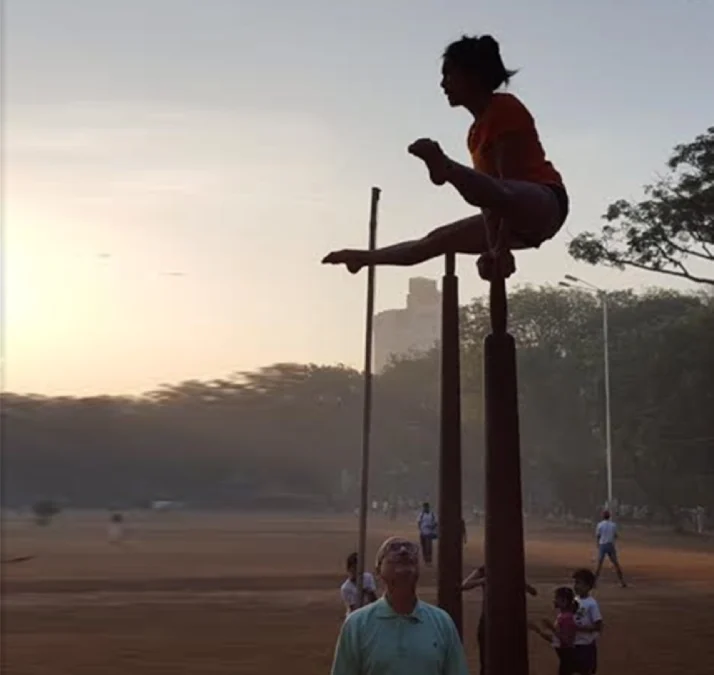
Pole Fitness for Beginners: Everything You Need to Know
In recent years, Pole Fitness has taken the fitness world by storm, transforming from a niche activity into a widely recognized and respected fitness program. Let’s delve into the roots of Pole Fitness and its intriguing journey. Pole Fitness for Beginners has revolutionized the fitness world, evolving from a niche activity into a widely recognized and respected form of exercise.
Pole Fitness is not just about spins and climbs; it’s a dynamic and engaging workout that combines strength, flexibility, and artistry. Originating as a form of entertainment and beginners exercise, Pole Fitness has evolved into a legitimate fitness regimen, gaining popularity for its effectiveness in building strength and enhancing overall fitness.
To understand the roots of Pole Fitness, we journey back to ancient practices like Indian mallakhamb and Chinese pole acrobatics. These age-old traditions laid the foundation for what we now know as Pole Fitness. Indian mallakhamb, in particular, showcased the incredible strength and agility required for performing gravity-defying feats on a vertical pole.
Enter Mallakhamb, a traditional Indian sport that shares a fascinating connection with Pole Fitness. Mallakhamb, meaning “pole gymnastics” in Sanskrit, involves performing acrobatics and yoga postures on a vertical wooden pole. The similarities between Mallakhamb and Pole Fitness are uncanny, as both require strength, balance, and a touch of artistic flair.
Mallakhamb, deeply rooted in Indian culture, has been practiced for centuries as a means of physical and mental well-being. The disciplined approach and focus on core strength in Mallakhamb echo the principles embraced by modern pole fitness beginners.
In the following sections, we’ll explore the health benefits, getting started tips, and the progression of both Pole Fitness and Mallakhamb, providing a holistic view for those intrigued by these unique and empowering fitness pursuits. So, let’s continue our journey into the world where ancient traditions meet contemporary fitness – the world of Pole Fitness and Mallakhamb.
Key Takeaways
- Embrace the powerful fusion of ancient practices like Mallakhamb and contemporary fitness trends like pole fitness beginners. Discover a fitness journey that honors tradition while providing modern benefits.
- Both Pole Fitness and Mallakhamb offer holistic health benefits, enhancing physical strength, flexibility, and mental well-being. Embrace the joy of movement while improving your overall fitness.
- Progress from basic beginner pole moves to advanced spins and poses, unlocking your potential in both activities. Whether you choose the dynamic spins of Pole Fitness or the cultural expressions of Mallakhamb, your journey is uniquely yours.
- Prioritize safety with proper attire, warm-ups, and avoiding lotion. Consistent practice is key to overcoming challenges, building strength, and mastering new beginner pole moves in both Pole Fitness and Mallakhamb.
- Each spin, climb, and pose adds a chapter to your fitness story. Celebrate your unique journey, whether you find yourself on a competitive stage or embracing the cultural heritage of Mallakhamb. The joy of movement is yours to savor.
Health Benefits of Pole Fitness and Mallakhamb
Now that we’ve dipped our toes into the fascinating world of pole fitness beginners, let’s unravel the myriad health benefits that come with these unique activities.
Physical Advantages
Pole Fitness
Pole Fitness isn’t just a captivating dance around a pole; it’s a full-body workout that enhances strength, flexibility, and endurance. Regular practice strengthens your core, tones muscles, and improves overall physical fitness. Climbing, spinning, and holding poses on the pole engage various muscle groups, providing a comprehensive workout.
Mallakhamb
Similar to Pole Fitness, Mallakhamb boasts impressive physical benefits. Performing acrobatics and yoga postures on a vertical pole cultivates strength, particularly in the core, arms, and legs. The dynamic movements in Mallakhamb contribute to improved flexibility and balance, fostering a well-rounded physical development.
Psychological Benefits
Pole Fitness beginners exercise
Beyond the physical realm, Pole Fitness has a profound impact on mental well-being. The sense of accomplishment in mastering challenging pole moves for beginners boosts self-confidence. Engaging in expressive and artistic elements during routines fosters a positive body image, promoting self-acceptance and empowerment.
Mallakhamb
Mallakhamb, with its disciplined approach, not only builds physical strength but also enhances mental resilience. The focus required for balancing on the pole and transitioning between poses contributes to improved concentration and mental clarity. Mallakhamb becomes a meditative practice, offering stress relief and a sense of achievement.
Both Pole Fitness and Mallakhamb extend well beyond the physical, nurturing a holistic well-being that combines strength, flexibility, and mental resilience. Whether you’re drawn to the rhythmic spins of Pole Fitness or the traditional grace of Mallakhamb, these activities offer a unique path to a healthier and more confident you.
As we continue our exploration, we’ll uncover more about getting started, what to expect in your first class, and the exciting progression in both Pole Fitness and Mallakhamb. Stay tuned for the next steps in your fitness journey!
Getting Started with Pole Fitness and Mallakhamb
Now that we’re all set to embark on our fitness journey, let’s navigate the initial steps of getting started with Pole Fitness and Mallakhamb, ensuring a smooth and informed beginning.
Choosing the Right Pole
For Pole Fitness
Pole Fitness offers two main types of poles – static and spinning. Static poles remain stationary, providing stability for beginners, while spinning poles add an extra dynamic by allowing rotation. For beginners pole move, a static pole is often recommended to build foundational strength and confidence. When choosing a pole, consider factors like height, material, and grip texture to find the one that suits your preferences.
For Mallakhamb
Mallakhamb takes a more traditional route with a sturdy wooden pole. The focus here is on the grip and stability provided by the wooden surface. Ensure the Mallakhamb pole is securely installed, allowing for a safe practice space.
Safety Precautions
Ensuring a safe practice environment is paramount in both Pole Fitness and Mallakhamb.
For Both
- Skin Grip: Wear appropriate clothing that allows direct skin contact with the pole or Mallakhamb apparatus for a secure grip.
- Warm-Up Routines: Begin each session with a thorough warm-up to prepare your muscles for the physical demands of the activities.
- Avoiding Lotion: Skip the lotion before your practice to maintain a firm grip and prevent slips.
Basic Moves in Pole Fitness and Mallakhamb
For Pole Fitness
- Climbing: Master the basic climb to move up and down the pole safely.
- Sitting Poses: Learn various sitting poses, building strength and stability.
- Spinning: Explore the exhilarating spins around the pole, combining grace and strength.
For Mallakhamb
- Basic Poses: Begin with fundamental Mallakhamb poses, focusing on balance and control.
- Transitions: Practice smooth transitions between poses, gradually building agility.
- Posture Emphasis: Pay attention to correct posture, as it forms the foundation for Mallakhamb movements.
By understanding the nuances of choosing the right equipment and embracing safety measures, along with starting with basic pole moves for beginners, you’re laying a solid foundation for your journey into the domain of Pole Fitness and Mallakhamb.
Your First Pole Fitness and Mallakhamb Class
As you gear up for your inaugural Pole Fitness and Mallakhamb class, let’s delve into what to wear, what to expect, and how to ensure a fulfilling and safe learning experience.
What to Wear for Pole Fitness and Mallakhamb
For Both
- Comfortable Attire: Opt for snug, yet flexible clothing that allows freedom of movement. For Pole Fitness, consider shorts and a sports bra to facilitate skin contact with the pole. In Mallakhamb, leggings or shorts paired with a comfortable top work well.
- Proper Footwear: Go barefoot for both activities to maintain a secure grip on the pole or Mallakhamb apparatus.
Expectations and Benefits
Physical Challenges
- Understand that both Pole Fitness and Mallakhamb come with their physical challenges. Sore muscles, bruises, and initial difficulties are part of the learning curve.
- Embrace the Challenges: Approach challenges with a positive mindset, viewing them as opportunities for growth and improvement.
Benefits of Consistent Practice
- Consistency is Key: Highlight the importance of regular practice to build strength, improve flexibility, and master new pole moves for beginners.
- Unique Benefits of Each: Emphasize the distinct advantages of each activity; Pole Fitness for its dynamic, dance-like qualities, and Mallakhamb for its traditional and disciplined approach.
Finding Quality Instruction
For Both
- Local Studios and Instructors: Search for local Pole Fitness and Mallakhamb studios or certified instructors. Attend classes in a supportive and encouraging environment.
- Reviews and Recommendations: Read reviews or seek recommendations from friends who have experienced classes. A positive learning atmosphere and knowledgeable instructors make a significant difference.
Online Resources
- Online Classes: Explore online platforms offering Pole Fitness and Mallakhamb classes, especially if local options are limited.
- Certification: Ensure that instructors hold relevant certifications and have a solid understanding of safety protocols.
Progression and Challenges in Pole Fitness and Mallakhamb
As your journey in Pole Fitness and Mallakhamb unfolds, let’s explore the exciting progression and inevitable challenges that come with mastering these empowering activities.
Intermediate Moves in Pole Fitness
More Advanced Spins
- Elevate your Pole Fitness skills with intricate spins that demand greater control and precision.
- Explore combinations of spins to create fluid and captivating routines.
Inversions and Floorwork
- Progress to inversions, defying gravity as you learn to suspend your body upside down on the pole.
- Dive into floorwork, seamlessly integrating dynamic movements on and around the pole.
Advanced Poses in Mallakhamb
Complex Poses and Maneuver
- Transition to advanced Mallakhamb poses that showcase your strength, flexibility, and balance.
- Explore challenging maneuvers, incorporating dynamic movements and elegant postures.
Parallels to Pole Fitness
- Draw parallels between advanced Mallakhamb poses and intermediate pole moves in Pole Fitness, recognizing the shared principles of strength and grace.
Strength Training for Both
Upper-Body Strength Development
- Emphasize the importance of continuous strength training for both Pole Fitness and Mallakhamb.
- Highlight specific Pole Fitness beginners exercise targeting the upper body to enhance grip strength and overall muscular endurance.
Consistent Progression
- Stress the need for consistent beginners exercise to gradually build strength and master more advanced pole moves.
- Encourage a balanced approach, incorporating strength training into your routine alongside regular classes.
In your progression, challenges will naturally arise. Embrace them as opportunities for growth and improvement. Whether you’re doing Pole Fitness beginners exercise conquering intricate spins in Pole Fitness or mastering advanced poses in Mallakhamb, the journey is about continuous learning and pushing your boundaries.
Competitive Pole Dancing and Mallakhamb Performances
As we get through into the final chapter of our exploration into the world of pole fitness for beginners, let’s find the captivating aspects of competitive endeavors and artistic expressions in these empowering activities.
Evolution into a Competitive Sport (Pole Fitness)
Choreographed Routines
- Pole Fitness has evolved from a fitness trend to a competitive sport, showcasing choreographed routines that blend athleticism with artistic expression.
- Competitors perform a series of spins, poses, and transitions, weaving a story through their movements.
Judging Criteria
- Judging in competitive pole fitness for beginners considers technical execution, creativity, fluidity, and overall presentation.
- The combination of strength, flexibility, and grace is evaluated to determine a performer’s skill and mastery.
Mallakhamb as a Performance Art
Traditional Performance Art
- Mallakhamb, deeply rooted in Indian culture, is not just a sport but a traditional performance art.
- Performers exhibit a harmonious blend of strength and flexibility while executing complex poses and dynamic movements on the wooden pole.
Cultural Significance
- Introduce Mallakhamb’s cultural significance, as it reflects India’s rich heritage and physical prowess.
- Highlight how Mallakhamb performances often incorporate traditional music and costumes, adding a cultural dimension to the art.
Transition between Static and Spinning Poles (Pole Fitness)
Dynamic Pole Transitions
- In Pole Fitness competitions, performers face the challenge of transitioning between static and spinning poles seamlessly.
- Discuss the skill required to maintain momentum and balance during these transitions, enhancing the overall artistic appeal.
Connections to Mallakhamb Performances
- Draw parallels between the dynamic aspects of Mallakhamb performances and the challenges of transitioning between static and spinning poles.
- Emphasize how both activities demand agility, coordination, and a deep understanding of the performance space.
Whether in the controlled environment of a competition or the traditional setting of a Mallakhamb performance, both activities offer unique ways to celebrate strength, grace, and the beauty of movement. Our fitness journey has come full circle, embracing the diverse facets of these empowering disciplines.
As you continue to explore and grow with pole fitness for beginners, remember that the true essence lies in the joy of movement and the celebration of your unique journey. Stay inspired, stay active, and enjoy the empowering benefits of these remarkable fitness pursuits!
Conclusion
In our exploration of Pole Fitness and Mallakhamb, we’ve uncovered a world where strength meets grace, tradition intertwines with modernity, and fitness becomes an empowering journey. As we wrap up our fitness expedition, let’s reflect on the key takeaways.
Pole Fitness isn’t just about spins and climbs; it’s a dynamic workout that enhances strength, flexibility, and confidence. Its roots trace back to ancient practices, showing us that what’s old can indeed be gold. From choosing the right pole to mastering advanced pole moves, it’s a journey of continuous growth and self-discovery.
Mallakhamb, a traditional Indian sport, adds a touch of cultural richness to our fitness narrative. With a wooden pole as your apparatus, Mallakhamb transforms into a performance art, combining physical prowess with artistic expression. Its connection to ancient traditions reflects the enduring beauty of movement.
Choosing the right attire, understanding safety precautions, and mastering basic beginner pole moves are the stepping stones to a successful start. Both Pole Fitness and Mallakhamb offer unique physical and mental benefits, encouraging consistent practice for a stronger, more confident you.
The journey doesn’t stop at the basics. In pole fitness for beginners, progress to competitive routines with choreographed grace, and in Mallakhamb, evolve into a performer weaving cultural stories. Transitioning between static and spinning poles adds a layer of challenge, connecting the dynamic aspects of both activities.
As you navigate through the world of Pole Fitness and Mallakhamb, remember that each step is a victory. Your fitness journey is a personal story, written with spins, poses, and the strength you discover within. Whether you find your rhythm on the pole or embrace the cultural heritage of Mallakhamb, celebrate the joy of movement and the unique journey that is yours.
Stay active, stay inspired, and relish the empowering benefits of Pole Fitness and Mallakhamb. Your fitness adventure has just begun, and the poles are waiting for your next move. Happy spinning, climbing, and performing!
FAQs
1. What do I need to know before learning pole fitness?
Explore the basics of Pole Fitness, including its origin, recent popularity, and the health benefits it offers. Understand the foundational knowledge to embark on your pole fitness journey.
2. What do you need to start pole fitness?
Learn about the essential equipment and attire for a successful start in pole fitness. Discover what you need in terms of poles, clothing, and safety measures.
3. What I wish I knew before pole fitness?
Gain insights into the experiences of those who have started their pole fitness journey. Learn from their perspectives and gather valuable tips that can make your initiation smoother.
4. What poles should a beginner buy?
Understand the difference between static and spinning poles and get guidance on choosing the right one for your beginner pole moves needs. Explore considerations like material, height, and grip.
5. Can pole be self-taught?
Uncover whether self-teaching is a viable option in pole fitness. Explore the benefits and potential challenges of learning pole on your own.
6. Can I self-teach pole fitness?
Delve deeper into the self-teaching aspect, understanding the resources available, and the importance of safety when opting for a self-taught approach in pole fitness.
7. Is 25 too old to start pole fitness?
Address common concerns about age and pole fitness. Discover that it’s never too late to start and that people of various ages can enjoy the physical and mental benefits of pole fitness.
8. Can you pole fitness if you’re weak?
Understand how pole fitness can actually help build strength, even for beginners with initial weakness. Discover the progressive nature of pole fitness and how it caters to varying fitness levels.
9. Can pole fitness replace the gym?
Explore the comprehensive fitness benefits of pole fitness and understand its potential as a standalone workout or a complement to your existing gym routine. Learn how it can be a versatile and enjoyable form of beginners exercise.
